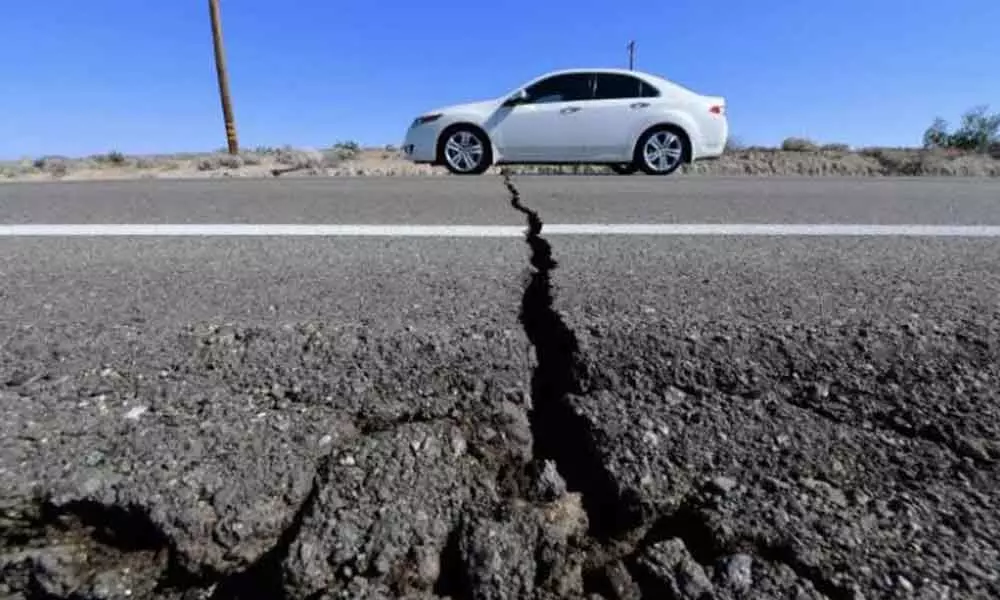Live
- Have time for jailed leaders but none for achievers: BJP slams Delhi govt over chess champion’s pain
- Alliance University holds 13th Convocation, 1145 students receive degrees
- SC orders strict action against illegal construction
- Man kills sibling over property dispute
- Karnataka gets third govt cardiology hospital
- Minister Ramalinga’s efforts help safeguard over 10,000 acres of temple Land
- Laxminarayan College gets NAAC B+ accreditation
- Champions Trophy: India vs Pakistan Match Likely to Be Held on This Date
- Tigress Zeenat spotted in Purulia
- Collectors asked for proper assessment of crop loss
Just In
High-tech device to improve earthquake, tsunami forecast


Scientists have successfully developed and tested a high-tech device that can detect the small movements and changes in the Earth's seafloor -- often a precursor to deadly natural hazards, like earthquakes, volcanoes and tsunamis.
Scientists have successfully developed and tested a high-tech device that can detect the small movements and changes in the Earth's seafloor -- often a precursor to deadly natural hazards, like earthquakes, volcanoes and tsunamis.
The shallow water buoy was installed off Egmont Key in the Gulf of Mexico last year, and has been producing data on the three-dimensional motion of the sea floor, according to the researchers from the University of South Florida (USF) in the US. The system will be able to detect small changes in the stress and strain of the Earth's crust, the researchers noted.
The patent-pending seafloor geodesy system is an anchored spar buoy topped by high precision global positioning system (GPS), they said. The buoy' orientation is measured using a digital compass that provides heading, pitch, and roll information - helping to capture the crucial side-to-side motion of the Earth that can be diagnostic of major tsunami-producing earthquakes, Dixon said.
While there are several techniques for seafloor monitoring currently available, that technology typically works best in the deeper ocean where there is less noise interference. Shallow coastal waters, which are less than a few hundred metres in depth, are a more challenging environment but also an important one for many applications, including certain types of devastating earthquakes, the researchers said.
Offshore strain accumulation and release processes are critical for understanding megathrust earthquakes and tsunamis, they noted. The experimental buoy rests on the sea bottom using a heavy concrete ballast and has been able to withstand several storms. The system is capable of detecting movements as small as one to two centimetres, said Tim Dixon, Distinguished Professor at USF School of Geosciences.
"The technology has several potential applications in the offshore oil and gas industry and volcano monitoring in some places, but the big one is for improved forecasting of earthquakes and tsunamis in subduction zones," Dixon said. "The giant earthquakes and tsunamis in Sumatra in 2004 and in Japan in 2011 are examples of the kind of events we'd like to better understand and forecast in the future," he said. Dixon said the system is designed for subduction zone applications in the Pacific Ocean's "Ring of Fire" where offshore strain accumulation and release processes are currently poorly monitored. One example where the group hopes to deploy the new system is the shallow coastal waters of earthquake prone Central America.

© 2024 Hyderabad Media House Limited/The Hans India. All rights reserved. Powered by hocalwire.com






